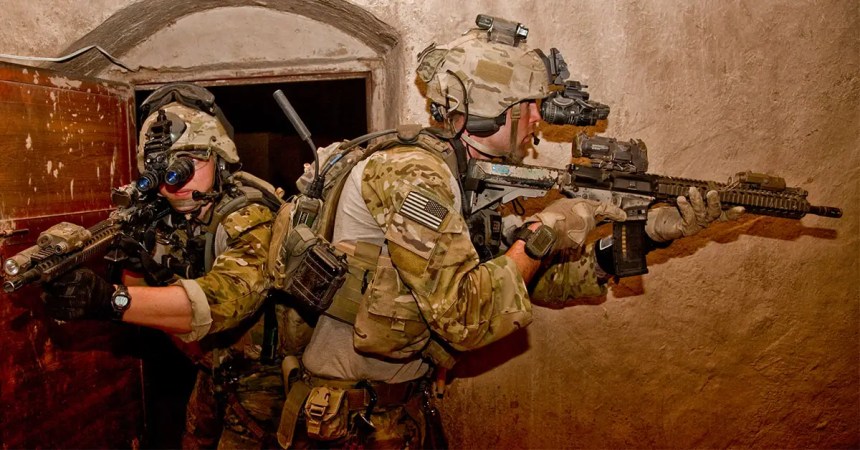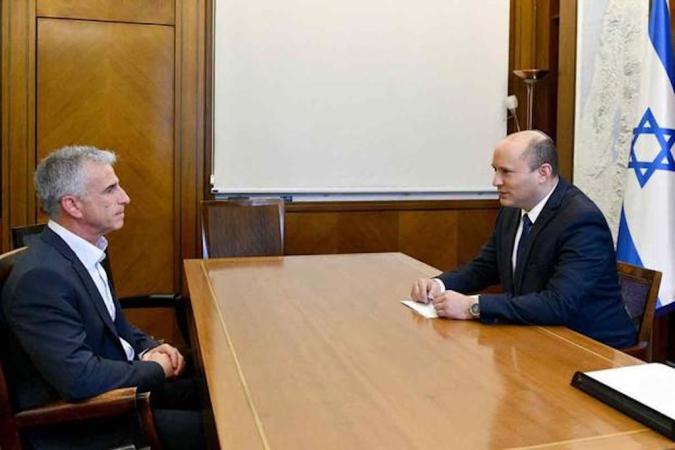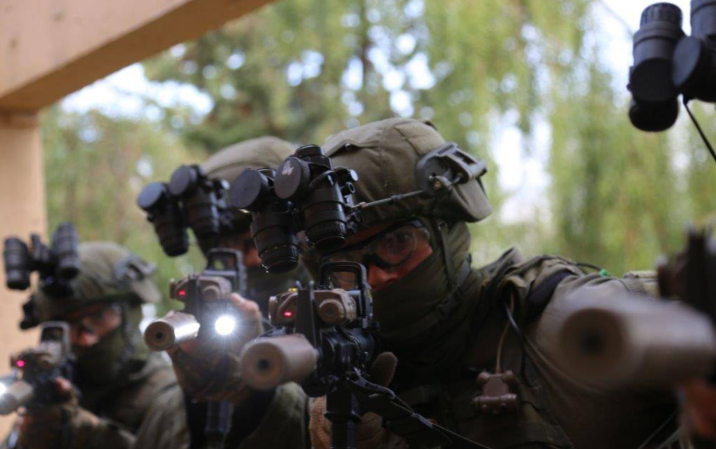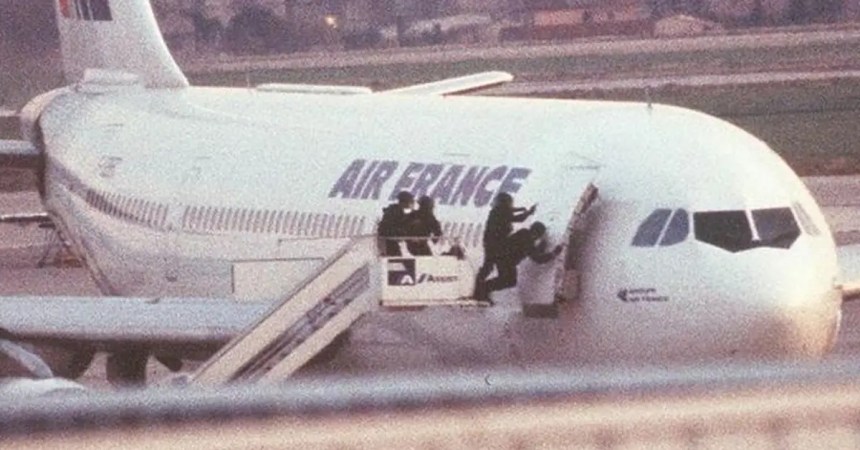There is a lot to say about Israel and its Defense Forces. Like most armed forces in the world, it has a significant history, even despite its relative youth. And like all armed forces in the world, not all of this history is good (despite what some might say), and not all of it is bad (despite what some might say).
From the get-go, Israel needed a miracle — and it got plenty. They came in the form of WWII veterans, brilliant generals, and a civilian population dedicated to preserving the idea that they belong there.

And their operation names are freaking cool.
1. Operation Spring of Youth
Spring of Youth was part of a larger operation with a cooler name (Wrath of God. Awesome). It was Israeli Mossad’s (intelligence service) response to the 1972 Munich Massacre. Israeli agents systematically hunted down and assassinated those involved with planning the Olympic massacre.

I know this is from the movie Munich, but still – anyone who kills a bunch of Israelis shouldn’t look so surprised that they died.
In 1973, Israeli commandos from Sayeret Matkal, Sayeret 13, and Sayeret Tzanhanim – elite special forces squads – came ashore in Lebanon near Beirut. Mossad agents drove them to buildings where senior members of the Palestine Liberation Organization (PLO), Popular Front for the Liberation of Palestine (PFLP), and Black September terrorist organizations lived. The commandos were disguised as tourists, some even dressed as women.

All three Palestinian targets were killed in the raids, along with hundreds of bodyguards, some Lebanese troops and policemen, and an Italian neighbor. One team of paratroopers met heavy resistance attacking the PFLP building, and so ended up destroying the whole building with explosives. The Israelis lost two soldiers in the raid. The commandos were then casually driven back to the beaches for exfiltration.
2. Operation Thunderbolt
When an Air France passenger jet bound for Paris from Tel Aviv was hijacked by the PFLP in 1976, the hijackers ordered the plane to be flown to Idi Amin’s Uganda. When the dictator welcomed them to Entebbe Airport, the PFLP demanded the release of Palestinian prisoners held by Israel and a $5 million ransom, due July 1st, 1976.

The hostages were separated into Israeli and non-Israeli groups. As the Israeli government negotiated the release of the hostages, the hijackers freed 153 non-Israelis. Amin and the hijackers agreed to extend the deadline for the deal to July 4th., giving Mossad time to debrief the released hostages in Paris and get information on the hijackers’ numbers and weapons. They also got a layout of the building from an Israeli firm – the one who built the airport.
On the day the hostages were to be executed, a 100-man task force took off from the Sinai (then controlled by Israel). Four C-130 Hercules cargo planes, followed by 2 Boeing 747s landed undetected at Entebbe. Then, 29 Israeli commandos from Sayeret Matkal, led by Lt. Col. Jonathan Netanyahu left the cargo planes in a black Mercedes and a squad of Land Rovers, resembling the motorcades used by Amin. Amin later told his son that the ruse was not as clever as the Israelis thought.

They approached the terminal, killed the Ugandan guards, then assaulted the airport. Three of the hostages were killed in the firefight, along with all the hijackers. Armored personnel carriers took the hostages to the waiting 747s as the commandos battled Ugandan troops and destroyed Chinese-built Ugandan fighter aircraft to prevent their pursuit. Colonel Netanyahu was killed in the firefight and five others were wounded.
In an operation lasting 53 minutes, 102 hostages were rescued, 45 Ugandans were killed, and 11 MiGs were destroyed on the ground.
One more hostage, a 75-year-old woman who had been taken to a hospital in Kampala during the crisis, was killed in her bed by Amin’s troops after the raid. Her body was found buried in a sugar plantation three years later.
3. Operation Opera
In 1981, eight Israeli F-16s and six F-15s flew right into Iraq to destroy the nuclear reactor at Osirak. Iraqi dictator Saddam Hussein was using the site to develop his nuclear weapons program – a potentially huge threat to Israeli security.
The fighters flew 2,000 miles from Israel to Iraq and back without refueling. The U.S. could not help them and Israel wouldn’t have in-flight refueling until 1982, when Iraq’s reactor would be online. Hitting the reactor was not a problem, it was getting back to Israel that presented the difficulty.
To this day, how Israel managed to get all her planes and pilots home is still classified.

Ten years later, Iraq fired a number of Scud missiles at Israel during the Gulf War in an effort to break the American-led coalition by inviting Israeli counterattacks. Ironically, a majority of the Scuds landed in either Haifa or the Ramat Gan area of Tel Aviv – home to many Iraqi descendants.
4. Operation Stout-Hearted Men
The Yom Kippur War touched off when Israel was attacked by an Arab coalition led by Egypt and Syria and consisting of Iraq, Jordan, Saudi Arabia, Morocco, and Algeria. The Arabs wanted to push Israel out of the Sinai and the Golan Height and allow Egypt to re-open the Suez Canal. This war did not go well for the Arabs – both the Golan and the Sinai not only remained in Israeli hands, the Israelis pushed deep into Syria and into Egypt, across the canal.

How they crossed the Suez is the miracle.
Under cover of darkness, an Israeli paratroop brigade crossed the canal on rubber boats between the 2nd and 3rd Egyptian Armies. Meanwhile, Israeli armor fought to open a corridor in the Sinai through which more units could pass safely to the front – including a series of floating bridges. The bridges allowed two IDF armored brigades to cross into Egypt.
Within a week, the IDF destroyed Egypt’s anti-aircraft umbrella and completely surrounded the Egyptian 3rd Army. This precipitated an end to the war and led to the Camp David Accords, Egypt’s recognition and peace treaty with Israel.
5. Operation Mole Cricket 19
Mole Cricket 19 was one of the largest air battles since World War II and probably one hell of a sight in 1982. To this day, it is the IDF’s most decisive victory, so one-sided it went down in history as the “Bekaa Valley Turkey Shoot.” But it didn’t seem like such an easy win at the time. Mole Cricket 19 would be the first time a surface-to-air missile battery was defeated without ground troops.

Syria moved a number of SAM batteries into Southern Lebanon as Lebanon was in the grips of a civil war that was then seven years old. Israel had launched a number of incursions into Lebanon in support of Christian militias and against PLO positions. The Syrian SAM batteries were a threat to Israel’s ability to control the airspace near its borders.
Israel soon annexed the Golan Heights, which led Syria to condemn the act as a declaration of war. On June 6, 1982, Israel launched a full invasion of Lebanon. Israeli PM Menachem Begin told the Knesset (and Syria) that if the Syrians kept the cease fire, the IDF would too. The Syrians didn’t. They halted an IDF advance and the Israelis used that to launch Mole Cricket 19.

Within two hours, the Israeli Air Force destroyed 15 of 19 SAM batteries while shooting down 90 enemy aircraft. The Syrian defeat in the Bekaa Valley Turkey Shoot caused alarm among Soviet defense experts. It caused them to question may even have led to the Glasnost ˆ(openness) policy and to the fall of the Soviet Union.
6. Operation Focus
In 1957, Israel declared that any closing of the Straits of Tiran to Israeli shipping would be considered an act of war. Then the Soviet Union misled Egypt into believing an Israeli pre-emptive strike was imminent. It was when Egypt began to mass its troops at the Egyptian-Israeli border that Israel began to consider a preemptive strike. When Egyptian President Gamal Abdul Nasser closed the Tiran Straits to Israeli ships, Israel began preparing for that strike.

Operation Focus was the Israeli Air Force operation that launched the Six-Day war in 1967. In less than four hours, 450 Egyptian, Jordanian, and Syrian combat planes were destroyed on the ground. Egypt lost some 18 airfields and was rendered largely ineffective for the rest of the war. Operation Focus used every single attack plane in the IAF and gave Israel complete air superiority on every front.










